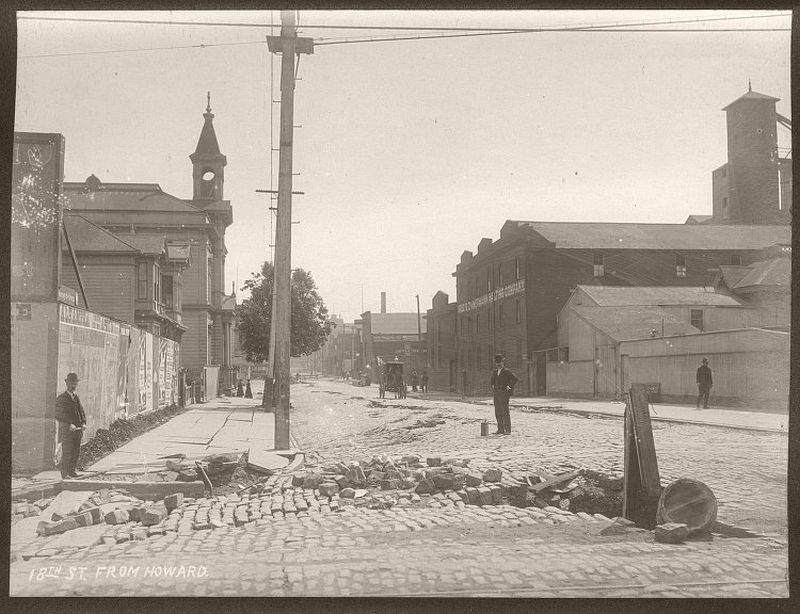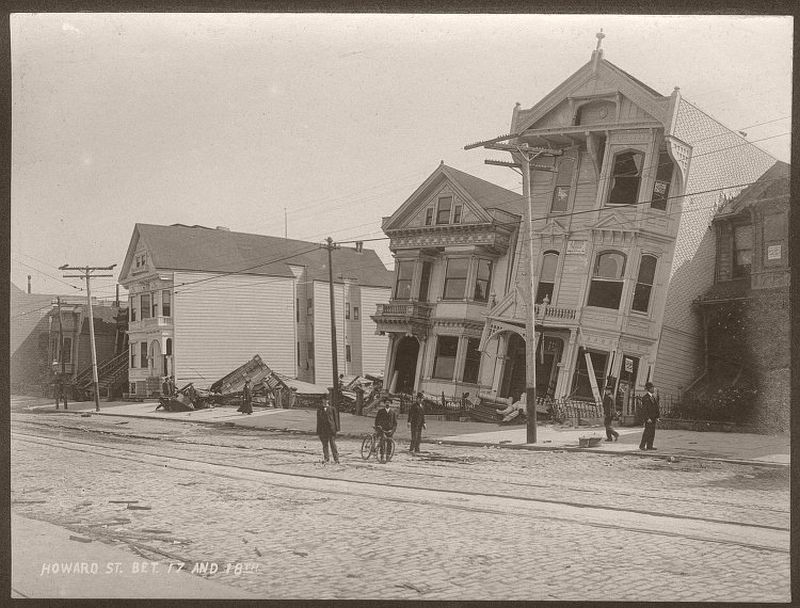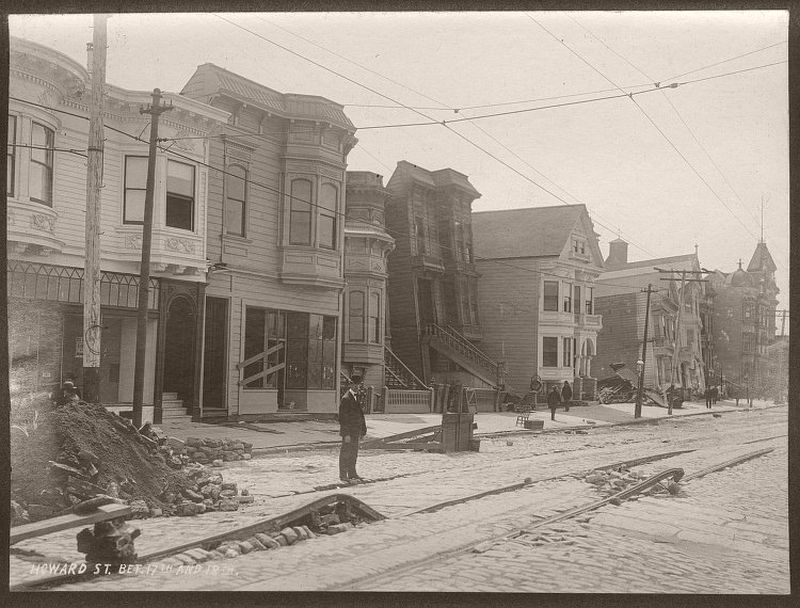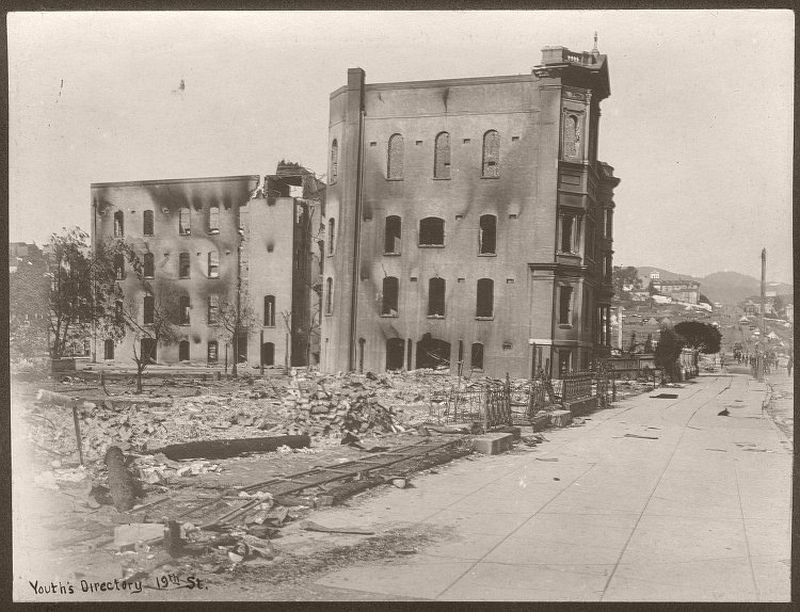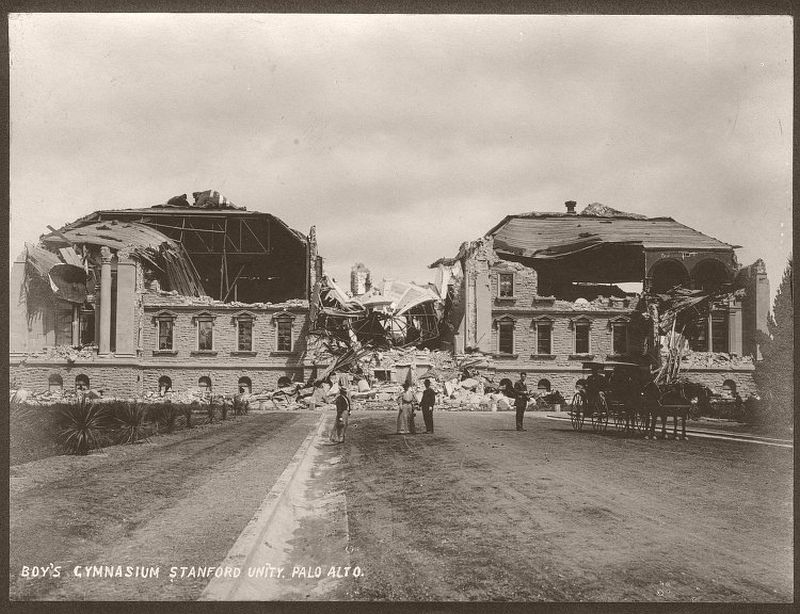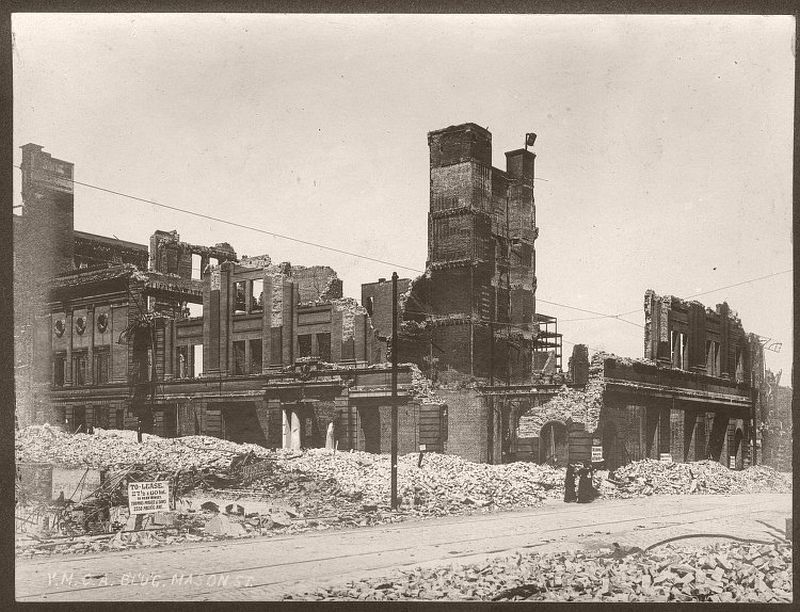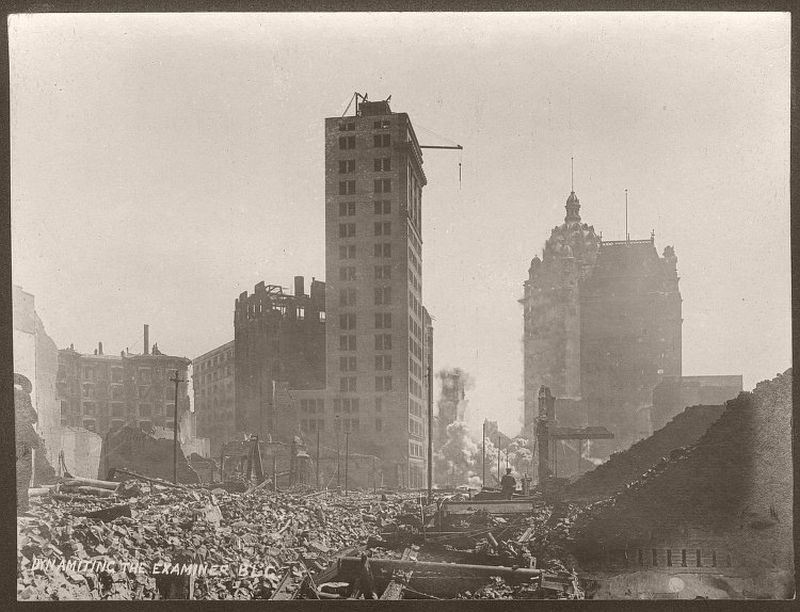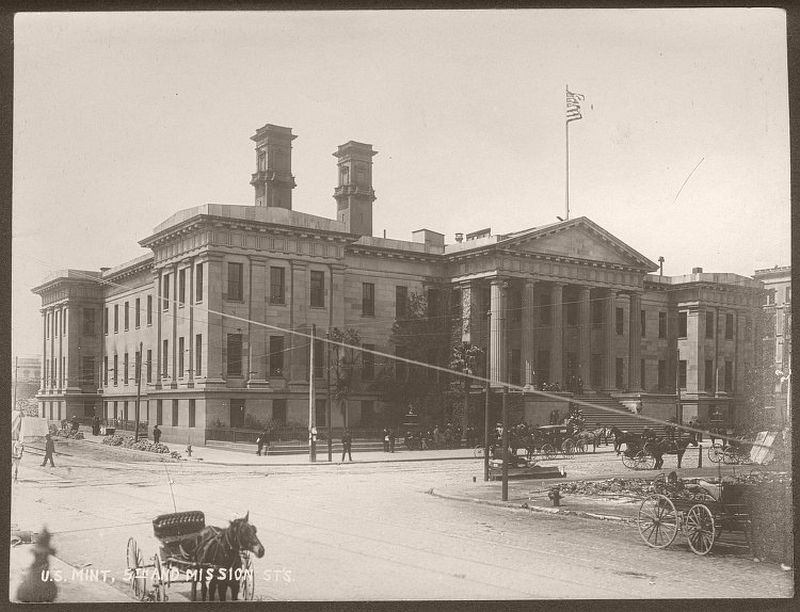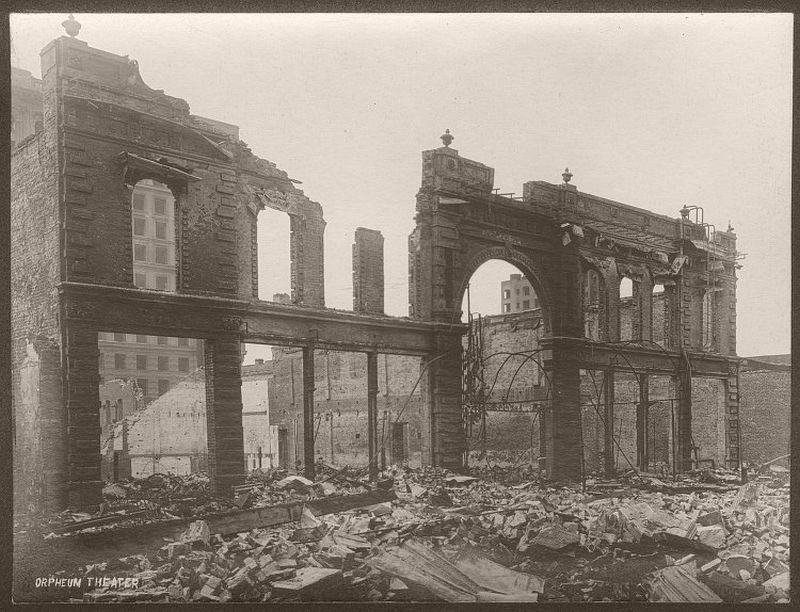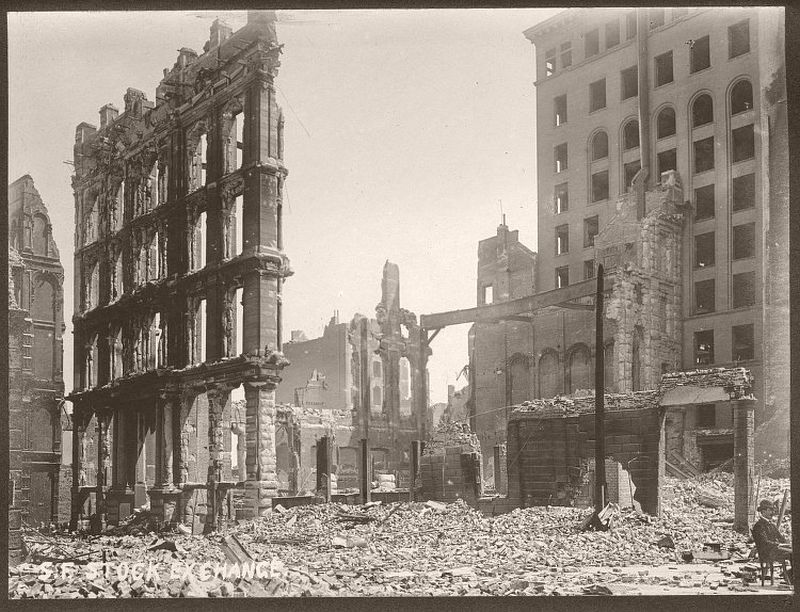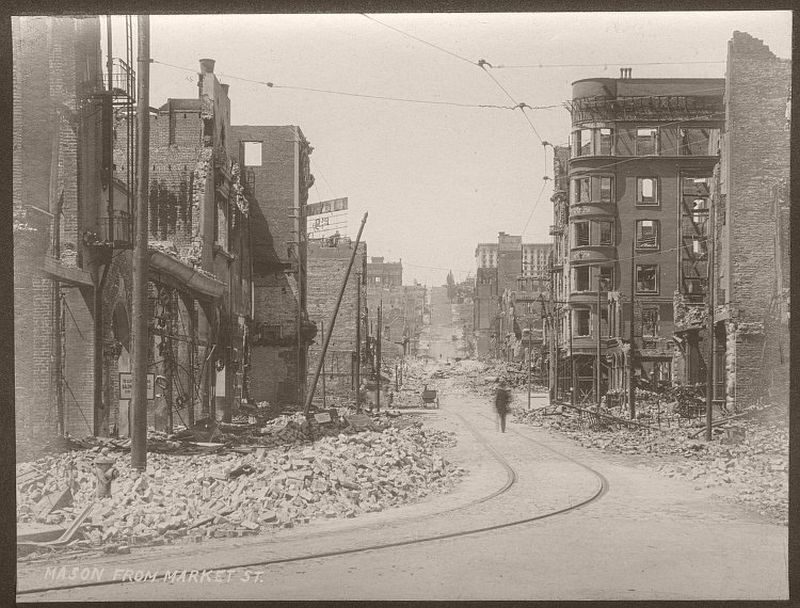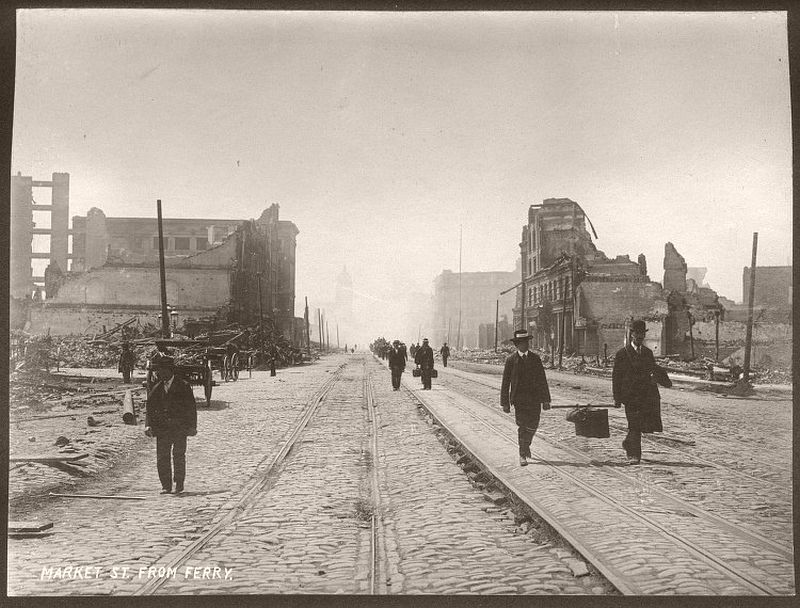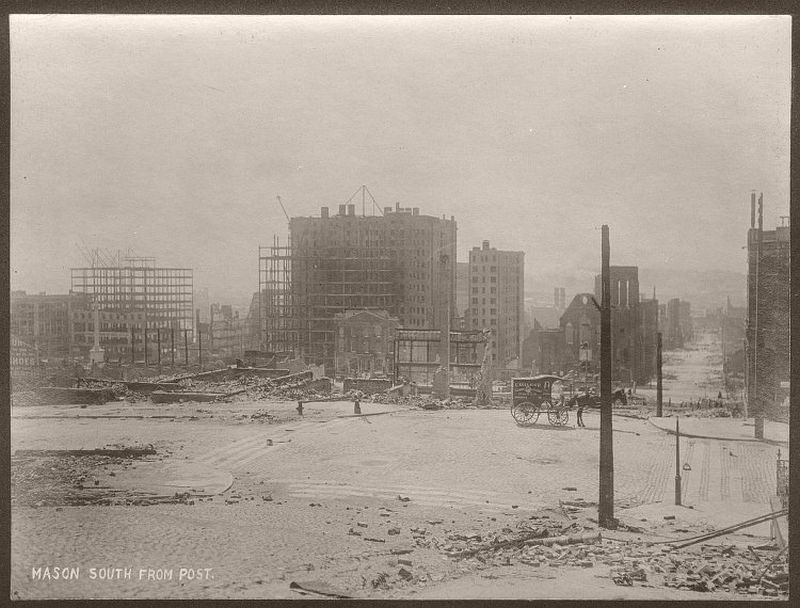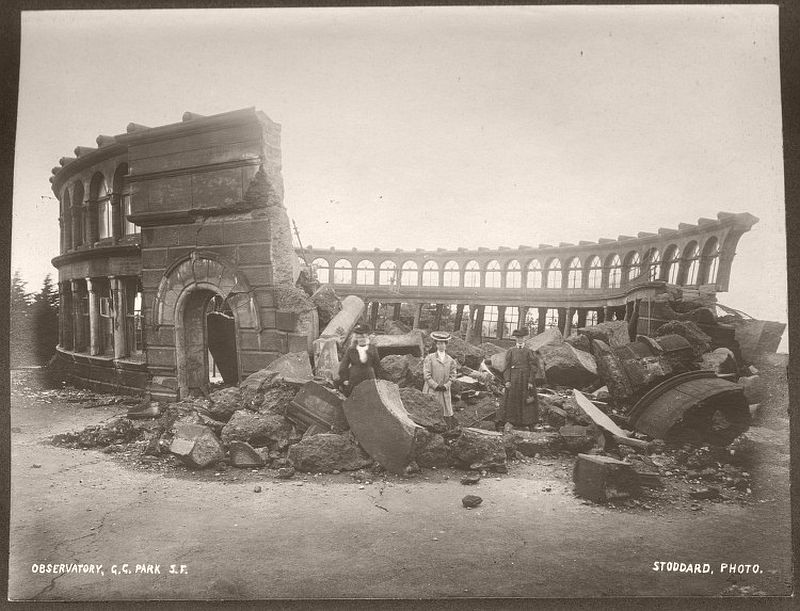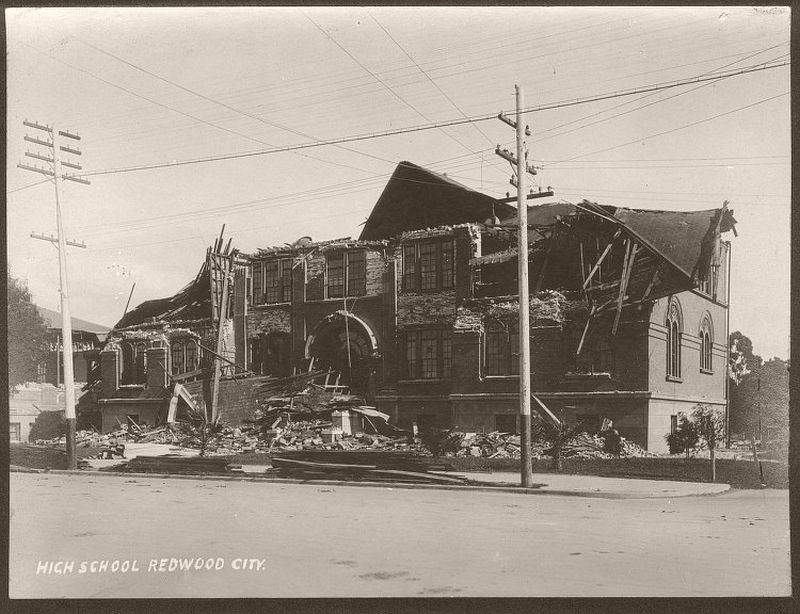The 1906 earthquake preceded the development of the Richter magnitude scale by three decades. The most widely accepted estimate for the magnitude of the quake on the modern moment magnitude scale is 7.8; values from 7.7 to as high as 8.3 have been proposed. According to findings published in the Journal of Geophysical Research, severe deformations in the earth’s crust took place both before and after the earthquake’s impact. Accumulated strain on the faults in the system was relieved during the earthquake, which is the supposed cause of the damage along the 450-kilometer-long segment of the San Andreas plate boundary. Shaking was felt from Oregon to Los Angeles, and inland as far as central Nevada.
A strong foreshock preceded the main shock by about 20 to 25 seconds. The strong shaking of the main shock lasted about 42 seconds. There were decades of minor earthquakes – more than at any other time in the historical record for northern California – before the 1906 quake. Widely interpreted previously as precursory activity to the 1906 earthquake, they have been found to have a strong seasonal pattern and have been postulated to be due to large seasonal sediment loads in coastal bays that overlie faults as a result of the erosion caused by hydraulic mining in the later years of the California Gold Rush.
via SMU Central University Libraries




